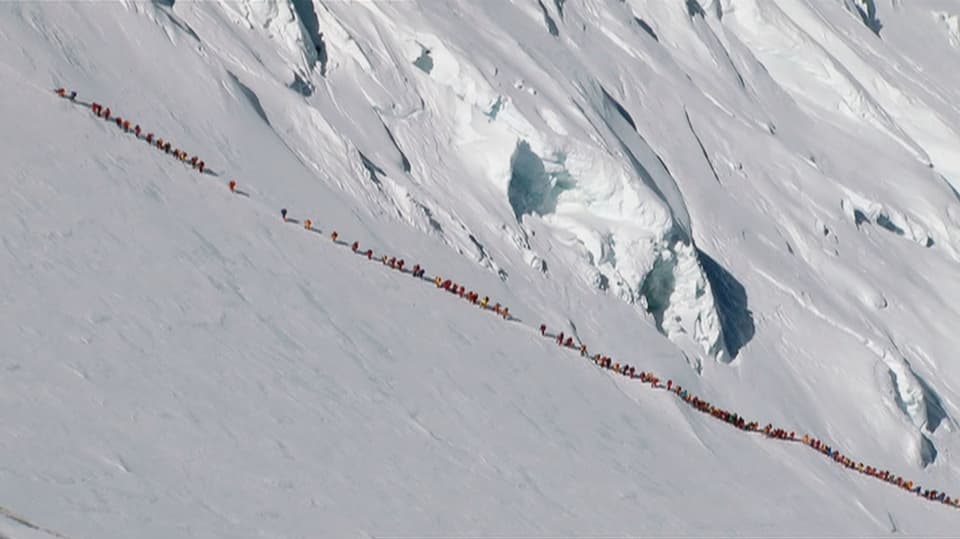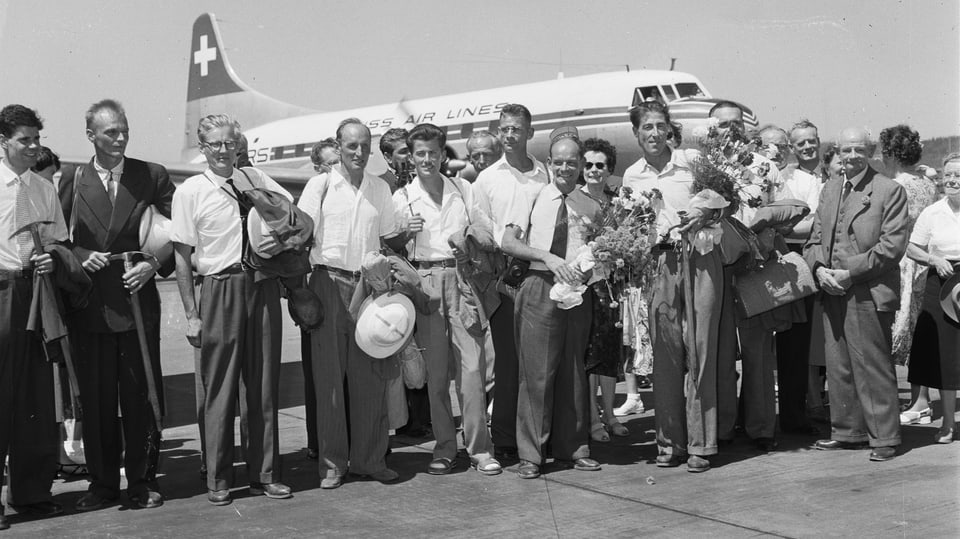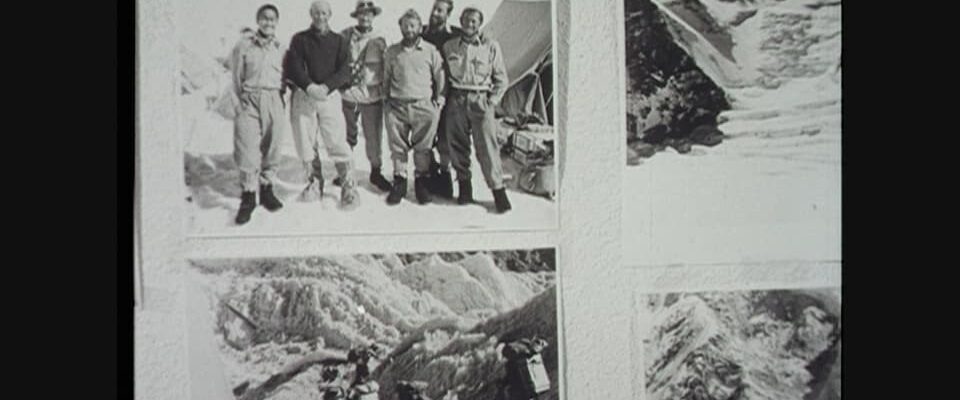Contents
The British were the first to climb Mount Everest 70 years ago. But the Swiss paved the way for this.
The rocky outcrop is called «Geneva Spur», in German «Geneva Spur». It got its name from Geneva mountaineers who first crossed this rock in 1952, paving the way for the first ascent of Mount Everest the following year. It was New Zealander Sir Edmund Hillary and Tenzing Norgay Sherpa who made the first ascent as part of a British expedition.
Legend:
The Geneva mountaineers together with Tenzing Norgay Sherpa (L) 1952.
ETH Library Zurich
«After the success of the English, the deeds of the Swiss were somewhat forgotten. However, the merits of the Swiss were shown later by historians,” explains Hansrudolf Keusen, alpinist, geologist and member of the board of trustees of the Swiss Foundation for Alpine Research.
Keusen is among those who spoke to several of the pioneers of the time. Among others with Hansruedi von Gunten, who made the third ascent of Everest and died two years ago.
The English considered Mount Everest their mountain.
When the Swiss set out to climb Everest, the British have been unsuccessful for around 30 years – and accordingly snubbed. Keusen knows that when Switzerland received permission for two expeditions from Nepal in 1952, it was “a minor diplomatic catastrophe” for the British.
“They considered Mount Everest their mountain.” And the Swiss initially made good progress on “their mountain” during the first attempt in the spring of 1952. “They spectacularly overcome the crevasse and open up new access to the southern ridge. This is how the ‘Geneva spur’ is later created,” says Keusen.
In the end it gets bitter: 250 meters before the summit, the Swiss rope team has to give up. The weather conditions are extreme and a first ascent is out of the question. The Swiss also fail on the second attempt in the fall of 1952.
But the British can learn lessons from this, for example the use of oxygen masks. Or the choice of route, because the British will choose the Swiss route for the first ascent. Where they have failed so far, they are now successfully scaling the summit.

Legend:
This is what it looks like on Everest these days: queues of people.
SRF
“The English expedition leader, Hunt, said after the expedition that they would not have been able to climb Everest without the Swiss and without this preparatory work,” confirms Keusen. “Also because the English had Tenzing Norgay Sherpa with them, who had been on the Swiss expeditions and knew the route.”
Keusen believes that the fact that the British forestalled the Swiss did not cause resentment. He also spoke about it with the late Everest pioneer Von Gunten. “He told me that the Swiss gave it to the English. Because the English have tried to get up the mountain so many times.”

Legend:
Hansruedi von Gunten (far left), who made the third ascent of Mount Everest, after the expedition’s return from Nepal.
ETH Library Zurich
Fascination remains to this day
The Swiss, on the other hand, would not have made their deeds public and remained modest. However, the legacy of the mountaineering foundation has remained: in 1956, the work of Swiss mountaineers resulted in a map of Mount Everest that is still used today.
Even the pioneer Von Gunten understood that Everest still magically attracts mountaineers today, reports Keusen. “He told me two things about it: First, the summit itself wasn’t that important to him, but getting to the mountain, which alone took a month. And secondly: Those were different times and he should treat every climber to this mountain. »
